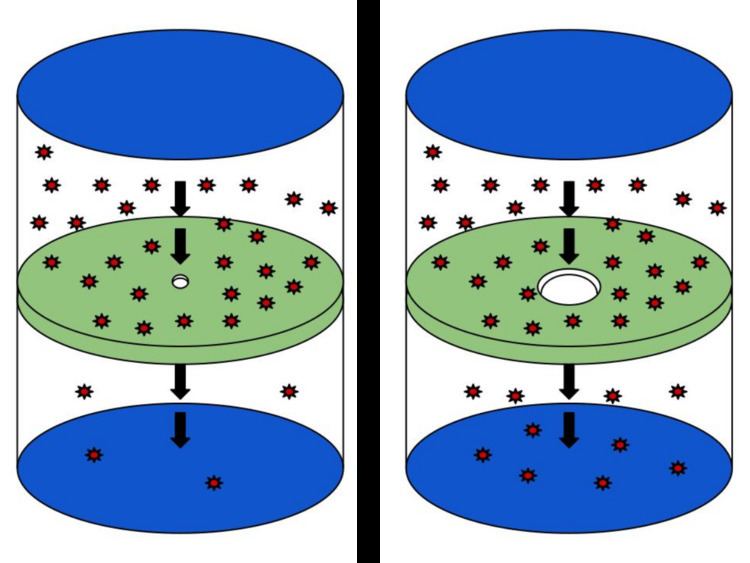 | ||
Effusion is the process in which a gas escapes through a hole of diameter considerably smaller than the mean free path of the molecules. Under these conditions, essentially all molecules which arrive at the hole continue and pass through the hole, since collisions between molecules in the region of the hole are negligible.
Contents
By the kinetic theory of gases, the kinetic energy for a gas at a temperature
where
Here p is the gas pressure, A is the area of the hole, NA is Avogadro's number, R is the gas constant and T is the absolute temperature.
At a given pressure and temperature, the effusion rate is proportional to the root-mean-square speed and inversely proportional to the square root of the molecular weight. Gases with a lower molecular weight effuse more rapidly than gases with a higher molecular weight, so that the number of lighter molecules passing through the hole per unit time is greater. This is why a balloon filled with low molecular weight helium (M = 4) deflates faster than an equivalent balloon full of higher molecular weight oxygen (M = 32). However the total mass of the escaping molecules is directly proportional to the square root of the molecular weight and is less for lighter molecules.
Graham's law
Scottish chemist Thomas Graham (1805–1869) found experimentally that the rate of effusion of a gas is inversely proportional to the square root of the mass of its particles. In other words, the ratio of the rates of effusion of two gases at the same temperature and pressure is given by the inverse ratio of the square roots of the masses of the gas particles.
where
The effusion rate for a gas depends directly on the average velocity of its particles. Thus, the faster the gas particles are moving, the more likely they are to pass through the effusion orifice.
Knudsen effusion cell
The Knudsen effusion cell is used to measure the vapor pressures of a solid with very low vapor pressure. Such a solid forms a vapor at low pressure by sublimation. The vapor slowly effuses through the pinhole, and the loss of mass is proportional to the vapor pressure and can be used to determine this pressure. The heat of sublimation can also be determined by measuring the vapor pressure as a function of temperature, using the Clausius–Clapeyron relation.
